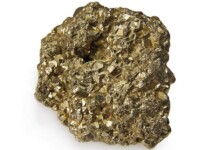A novel class of materials that enable a safer, cheaper, and more energy-efficient process for removing greenhouse gas from power plant emissions has been developed — an approach that could be an important advance in carbon capture and sequestration.
Power generating plants are the single largest source of carbon dioxide (CO2), a greenhouse gas that traps heat and makes the planet warmer. According to the U.S. Environmental Protection Agency, coal- and natural gas–fired plants were responsible for one-third of U.S. greenhouse gas emissions in 2012.
That’s why the agency has proposed rules mandating dramatically reduced carbon emissions at all new fossil fuel–fired power plants. Satisfying the new standards will require operators to equip plants with carbon-trapping technology.
Poo Power: New British Bus Runs on Human Waste
Current carbon capture technology uses caustic amine-based solvents to separate CO2 from the flue gas escaping a facility’s smokestacks. But state-of-the-art processes are expensive, result in a significant reduction in a power plant’s output, and yield toxic byproducts.
The new technique developed by a team from Harvard University and Lawrence Livermore National Laboratory employs an abundant and environmentally benign sorbent: sodium carbonate, a.k.a. kitchen-grade baking soda. The scientists produced microcapsules that contain liquid sorbents encased in highly permeable polymer shells. They have significant performance advantages over the carbon-absorbing materials currently used.
The Tiny Fish That Captures More Carbon Than the Rain Forest
These sorbents achieve an order-of-magnitude increase in CO2 absorption rates compared to ones currently used in carbon capture. Another advantage: amines break down over time, while carbonates have a virtually limitless shelf life.
“Microcapsules have been used in a variety of applications—for example, in pharmaceuticals, food flavoring, cosmetics, and agriculture—for controlled delivery and release, but this is one of the first demonstrations of this approach for controlled capture,” says Jennifer A. Lewis, the Hansjörg Wyss Professor of Biologically Inspired Engineering at the Harvard School of Engineering and Applied Sciences and a co-lead author.
The work is described in a paper published online today in the journal Nature Communications.
(READ more from Harvard.edu)





















Baking soda method an order of magnitude greater! That’s great news. There is also good news elsewhere today that climate data was discovered to be incorrect. Then, even if there were a manmade increase in heat due to increased CO2 levels, there are spates and spates of technologies already discovered which could be useful The Pachecho Cell. Kanzius’ radiofrequency hydrolysis of water at 13.56 Megahertz. Catalysts which split water which involve vanadium and molybdenum. Then there is the element Ruthenium, the metal form of which will split water in the presence of sunlight.
“sodium carbonate, a.k.a. kitchen-grade baking soda”
Baking Soda is actually sodium bicarbonate, or sodium hydrogen carbonate, which is quite different from sodium carbonate (washing soda), with one of the sodium atoms replaced by a hydrogen. Which do they actually use?